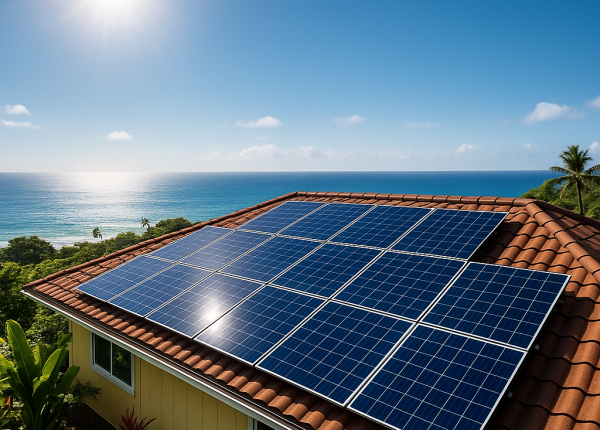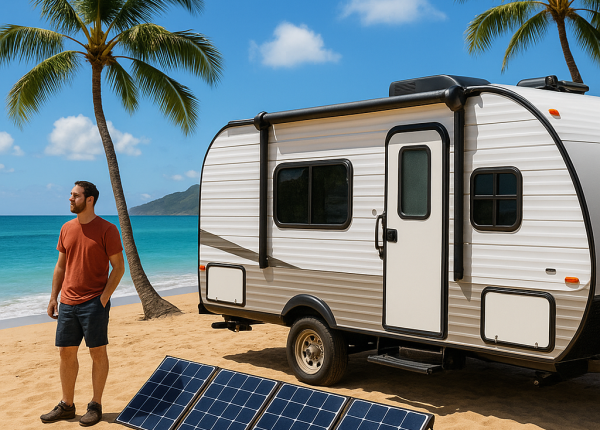How Solar Energy Supports a Sustainable World
How Solar Energy Supports a Sustainable World
How Solar Sustainability Protects Hawaii’s Environment
If you’ve ever wondered how much impact a single renewable energy choice can make, you’re in good company. Many residents and businesses across Hawaii are searching for cleaner energy options that protect fragile ecosystems while improving long-term efficiency. This growing curiosity has turned the spotlight toward solar sustainability and what it truly means for those living in a resource-sensitive region. With abundant sunshine anchoring Hawaii’s shift toward renewable energy Hawaii solutions, solar represents a practical and transformative path forward.
People across the islands want energy practices that protect local ecosystems and offer long-term reliability and independence. Solar energy answers both needs, supporting environmental resilience while lowering energy costs. In this article, we’ll explore how solar sustainability benefits Hawaii, why it matters globally, and how communities can make informed choices.
Why Solar Sustainability Matters for Hawaii and Beyond
Solar sustainability refers to the long-term environmental and practical effectiveness of solar systems. It goes beyond installing solar panels Hawaii residents rely on and focuses on creating an energy ecosystem that remains clean, efficient, and reliable for decades. Hawaii’s unique geography and reliance on imported energy make this concept essential as the islands experience higher utility costs and increasing climate-related risks.
Key Advantages of Solar Sustainability
- Reduces dependence on fossil fuels
- Minimizes emissions and pollution
- Strengthens long-term energy stability
- Supports statewide goals for renewable energy
For residents and businesses, the benefits go even further. Solar systems help create predictable electricity expenses, decrease grid pressure, and boost energy independence during storms or outages.
How Solar Sustainability Creates Long-Term Environmental Impact
Solar sustainability impacts the environment in significant ways, from reducing emissions to improving self-reliance. The following areas highlight how sustainable solar practices create measurable improvements across Hawaii and beyond.
How Solar Panels Reduce Environmental Footprints
Solar panels reduce carbon emissions by converting sunlight into clean electricity without fossil fuels. Understanding how solar panels convert sunlight into electricity reveals just how effective they are in eliminating pollution from traditional power sources. Cleaner air, healthier ecosystems, and fewer transportation-related emissions all contribute to the cumulative benefits of solar adoption. High-efficiency photovoltaic options are available at Alternate Energy Hawaii.
How Renewable Energy Improves Energy Resilience
Energy resilience is especially critical for island communities that depend on external fuel sources. Hawaii solar energy systems strengthen resilience by offering a stable, self-sufficient power supply. When combined with storage solutions, solar maintains essential operations even during outages or severe weather events.
How Solar Technology Supports Long-Term Efficiency
Modern solar technologies are designed to last 25+ years with minimal maintenance, reducing environmental waste and improving long-term returns. Additional energy-efficient solutions can be explored at Alternate Energy Hawaii.
How Sustainable Solar Design Benefits Local Ecosystems
Sustainable solar design considers environmental impact. Rooftop systems avoid habitat disruption entirely, and ground-mounted systems are carefully placed to minimize land impact. Solar water heating solutions, such as those at Alternate Energy Hawaii, further support sustainable energy use.
How Solar Adoption Supports Global Climate Goals
Every solar installation contributes to global climate progress. Hawaii’s goal of 100% renewable energy by 2045 highlights the island’s local contribution to global climate objectives. International insights can be found at the UN, NREL, and Energy.gov, showing solar’s worldwide impact.
Real-World Applications of Solar Sustainability in Hawaii
Residential solar Hawaii systems with battery storage reduce electricity bills by up to 40% while improving energy independence. Commercial installations, such as in hotels and farms, lower operational costs and emissions, supporting sustainability certifications. Community solar programs expand access to clean energy for multiple households.
More details on Hawaii’s solar pros and cons can be found at Alternate Energy Hawaii Blog.
Best Practices for Maximizing Solar Sustainability
1. Optimize System Sizing for Long-Term Efficiency
Proper sizing prevents unnecessary costs and maximizes efficiency. Consider future energy needs, including EV charging solutions.
2. Prioritize High-Quality Solar Components
Premium components last longer and withstand Hawaii’s climate. Reliable electrical support is available at Alternate Energy Hawaii.
3. Combine Solar with Battery Storage
Pairing solar with storage reduces grid strain, improves energy independence, and maximizes self-consumption.
4. Schedule Regular Maintenance and Monitoring
Regular inspections and monitoring software maintain peak efficiency and support sustainability goals.
5. Choose Installers with a Sustainability-First Approach
Work with Hawaii solar installers who prioritize ethical practices, efficient design, and long-term planning. Roofing solutions for solar systems can be explored at Alternate Energy Hawaii.
Final Takeaways
Solar sustainability protects ecosystems, strengthens energy independence, and supports Hawaii’s renewable energy goals. Abundant sunlight and incentives, including Hawaii solar tax credit 2025 programs, make solar a cost-effective, long-term investment.
By choosing sustainable solar practices, communities across Hawaii move toward a resilient, environmentally responsible future.
Frequently Asked Questions About Solar Sustainability
Is solar sustainability cost-effective in Hawaii?
Yes. Many homes save 30–50% on electricity, with further savings when paired with battery storage and incentives.
How does solar sustainability help the environment?
Solar reduces fossil fuel reliance, cuts emissions, and protects ecosystems.
Can solar panels withstand Hawaii’s weather?
Yes, modern panels are rated for UV exposure, heavy rain, and hurricane-level conditions.
What happens to solar panels at the end of their life?
Panels can be recycled to recover glass, silicon, and metals, reducing waste and supporting sustainability.
Do solar batteries increase sustainability?
Absolutely. Batteries store excess energy, reduce grid strain, and ensure clean power availability.
Additional insights and industry references can be found at Forbes and SolarReviews.


